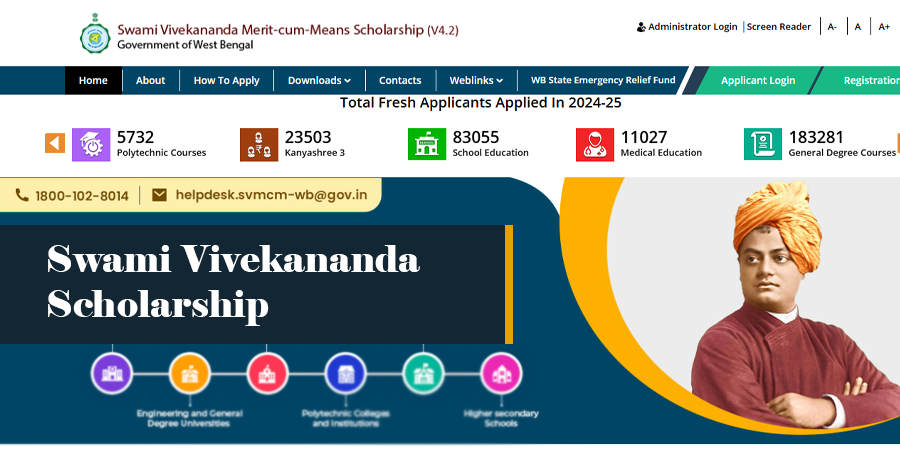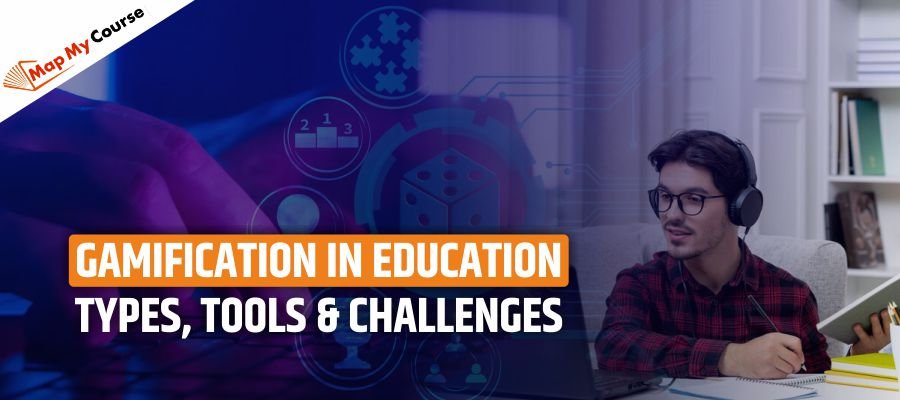Let’s be real for a sec though! Have you ever just sat down to study and completely zoned out? Like, one minute you’re reading a chapter, and the next, you’re scrolling through your phone or staring at the ceiling, thinking why studying feels so boring. I guess everyone did!
But what if learning might actually be fun? Like, imagine this, getting points for finishing a lesson, earning badges for smashing a quiz, or even having a little friendly competition with your friends to see who scores the highest. Way more exciting than just learning facts, don’t you think so?
Well, that’s exactly what Gamification in Education does! It turns boring lessons into something thrilling, kinda like a game. And you know what? It’s already going on! Schools, colleges, and even online learning platforms in India are using gamification to make studying less of a struggle and more of an experience you actually want to be a part of. Let’s find out about everything in this blog.
What Is Gamification?
Gamification is about making learning feel more like a game. It’s not about turning your whole study session into a video game, but adding fun elements like points, badges, challenges, and rewards to the process. Think of it as a way to make studying feel less like a chore and more like something you actually want to do.
Instead of just reading textbooks or memorizing facts, gamification gives you something to work towards, like completing levels or earning rewards for your progress. It’s a great way to stay motivated and involved with your studies. Whether you’re working through lessons, taking quizzes, or completing assignments, gamification makes it all feel more interactive and exciting.
How Gamification Works In Education?
Gamification in education is basically about making learning feel like a game instead of a boring chore. It adds points, badges, rewards, and challenges to lessons, making students more engaged and motivated. Instead of just sitting through lectures or reading textbooks, students get to interact, compete, and track their progress in a fun way.
A great example is think of Duolingo! you earn streaks, XP points, and badges for completing language lessons. Some schools use leaderboards where students compete based on their scores, while others reward students with virtual coins they can use for extra study materials. Platforms like Byju’s and Unacademy also use gamification to make learning more interactive.
But here’s the thing, just adding rewards isn’t enough. Gamification actually works best when it’s combined with real learning value. If the lessons aren’t structured well, students might focus more on earning points than actually understanding the subject. That’s why effective gamification keeps a balance, it makes learning fun, interesting, and educational at the same time.
Why Gamification Is Great For Learning
- Makes Learning Fun: You know how boring studying can get sometimes, right? Well, with gamification, you can actually earn points and rewards for learning. It makes things feel more like a game than just staring at a book.
- Keeps You Motivated: When you see those points stacking up or level up, it feels good and keeps you going. It’s a great way to stay motivated, especially when a subject seems tough or you’re just not feeling it.
- Helps You Learn Faster: Since you’re actively trying to score points or complete challenges, you actually remember stuff better. It’s like practicing without realizing you’re studying—everything just sticks!
- Improves Memory: Every time you take a quiz or challenge, it makes you think harder. Getting things right feels awesome and makes you remember that info way better than just reading it over and over.
- Makes Learning Competitive: Competing with your friends or classmates to see who can score the highest ads some fun competition. It pushes you to keep learning, and before you know it, you’re on top of your game!
- Instant Feedback: The best part? You get feedback directly. If you mess up, you’ll know right away, so you can fix it and keep moving forward without getting stuck or frustrated.
Types Of Gamification In Education
1. Points Systems
So, imagine this: you get points every time you finish a task, complete an assignment, or even just participate in class. It’s like collecting little rewards for all your efforts, and those points add up as you go along. It’s a simple way to track your progress and feel good about what you’re doing.
2. Leaderboards
Leaderboards bring in a bit of friendly competition. It’s like seeing how you rank compared to others. When you can see your name moving up the board, its super motivating and pushes you to keep working hard. It’s fun, and it adds a little excitement to learning.
3. Badges and Achievements
Badges are like mini-trophies that you earn when you hit specific milestones or do something impressive. It could be finishing a tough project or mastering a topic. It’s a nice little reminder of how much you’ve achieved and gives you a reason to keep going.
4. Quests and Challenges
Think of quests like little missions you need to complete. Teachers can set challenges that feel more like a game rather than just a regular task. It makes the learning journey feel like an adventure, where you have clear goals to work towards and rewards for finishing them.
5. Leveling Up
Just like in video games, leveling up in education lets you move through different stages as you get better at a subject. When you finally “level up,” it feels awesome because you’ve worked your way up from beginner to pro. It’s all about feeling that progress and improvement.
Best Gamification Tools & Platforms
1. Kahoot!
So, imagine turning quizzes into a high speed, fun game! That’s exactly what Kahoot! does. Teachers set up quizzes, and you compete in real-time with your classmates. You answer questions and rack up points, it’s a super exciting way to test your knowledge without it feeling like work!
2. Duolingo
If you’re trying to learn a new language, Duolingo makes it way more fun. The lessons feel like little games, and as you keep continuing, you earn points and unlock new challenges. It’s like leveling up in a game while learning a new language, definitely makes it less boring.
3. Classcraft
Okay, this one’s cool. Classcraft turns your class into an RPG! You make your own avatar, join teams, and level up as you complete tasks. It’s like you’re on a mission with your friends, and as you achieve things, you get rewarded. It makes learning feel like an adventure!
4. Quizizz
Quizizz takes the boring quiz format and turns it into a multiplayer game. You get to answer questions, earn points, and see how you stack up against your friends in real-time. It’s way more fun than a regular quiz, plus, teachers can make it all about what you’re learning in class.
5. Gametize
Gametize is awesome because it lets teachers turn the whole learning experience into a game. You earn points, level up, and complete challenges all while learning new stuff. It’s super customizable, so teachers can make it match exactly what you’re learning. It definitely makes schoolwork a lot more exciting.
6. Nudge
Nudge is all about giving students that extra push they might need. Teachers can send personalized reminders and rewards to keep students motivated. If you ever feel like you need a little nudge to keep going, this tool’s got your back.
7. Gimkit
Okay, Gimkit is like Kahoot, but with a twist. You answer questions to earn in-game money, which you can use to buy power-ups. It adds a whole new strategy to the quiz game, and it’s a ton of fun to compete and see who can come out on top.
How Teachers Can Use Gamification Effectively
- Set Clear Goals and Rewards
To make gamification work, teachers should set clear goals for students and offer rewards for hitting those targets. For example, students could earn points for completing assignments or get badges for mastering new topics. It’s all about giving them something to aim for and making learning feel more rewarding.
- Use Team Challenges
Gamification is way more fun when students can work together. Teachers can create group challenges where everyone has to work as a team to solve problems or hit certain milestones. This not only makes learning more enjoyable but also helps build teamwork skills.
- Use Technology to Make It Fun
There are so many awesome tools like Kahoot! Quizizz, and Seesaw that can turn learning into a game. Teachers can create interactive quizzes, games, and activities that students can play in real-time. This kind of instant feedback keeps things exciting and confirms that students stay engaged.
- Mix Competition with Collaboration
Competition can push students to do their best, but collaboration is just as important. Teachers can mix it up by having students work together on some tasks while still keeping single challenges. That way, students can enjoy both the thrill of competition and the support of working as a team.
- Adapt to Different Learning Styles
Not everyone learns the same way, so gamification needs to be flexible. Teachers can offer different types of challenges, like visual tasks, hands-on projects, or interactive games, so every student can find something that works for them. This way, everyone stays involved and has fun learning.
- Encourage Self-Reflection
Gamification isn’t just about winning rewards, it’s also about learning and growth. Teachers can inspire students to reflect on what they’ve learned, what they did well, and where they can improve. This helps students take charge of their learning and stay attentive on their goals.
Challenges & Limitations Of Gamification In Education
- It Can Get Too Competitive
Gamification can make learning super fun, but it also turns everything into a competition. Some students might feel pressured to be the best, and if they don’t win, it can actually make them feel worse about themselves instead of helping them learn.
- Tech Issues
Not every student has access to the best technology or a strong internet connection, and that’s a real issue with gamification. Some kids might miss out on games and activities because their devices can’t keep up, making them feel disconnected or frustrated.
- Extra Work for Teachers
As much fun as gamification can be for students, it also adds a lot of work for teachers. They need to create, set up, and track everything—quizzes, rewards, scores, and so on. This can be really time-consuming and might take away from other important teaching tasks.
- Focus on Rewards
The problem with gamification is that students can sometimes get too focused on earning points or rewards. They might care more about winning the game than actually learning the material, which defeats the purpose of using gamification in the first place.
- Not For Everyone
Not every student enjoys games or finds them motivating. While some might love it, others might get distracted or even bored with all the game elements. Gamification works best for certain types of learners, but it might not be the right fit for everyone in the class.
Future Of Gamification In Education
The future of gamification in education is seriously exciting! Picture this, games that change based on how you learn, so you can move at your own pace. Plus, we’re going to see a lot of virtual and augmented reality in classrooms, making everything way more interactive.
With AI-powered games, students will get feedback that’s actually helpful, and teachers will be able to keep track of progress easily. Gamification will also help with lifelong learning, so adults can keep learning in a fun way. It’s like learning is about to become a game everyone wants to play.
Check Out Latest Blogs
End Words
So, honestly! Gamification in education is such a game-changer! It makes learning feel way less boring and way more fun. I mean, who wouldn’t want to level up while learning, right? Its for sure, there going to tough scenes a lot in this way, but generally, it’s a win though. With the right tools, it can seriously change how we learn, and honestly, I’m super happy to see how it keeps rising. Imagine learning being this fun everywhere, how awesome that would be right!
FAQs
Q1. What is gamification in education?
Ans:Gamification includes using game-like features like points, badges, and challenges to make learning fun and appealing. It turns studying into an interactive experience.
Q2. Is gamification only for kids?
Ans:No, gamification works for all ages! While it also used in schools, it's also good for college students and adult learners who need a lift in motivation.
Q3. Does gamification really help students learn?
Ans:Yes! Gamification makes learning more appealing, helping students stay dedicated and improve retention, especially with challenging topics.
Q4. Can gamification be used for all subjects?
Ans:Absolutely! Whether it’s math, science, or language arts, gamification can be applied to any subject to make it more interactive and fun.
Q5. Are there any downsides to gamification?
Ans:Sometimes, students can get too focused on rewards instead of learning. But when used thoughtfully, gamification can be a great tool without these issues.

















